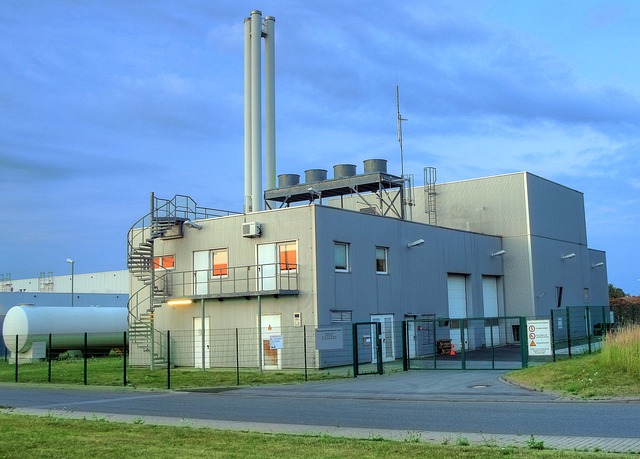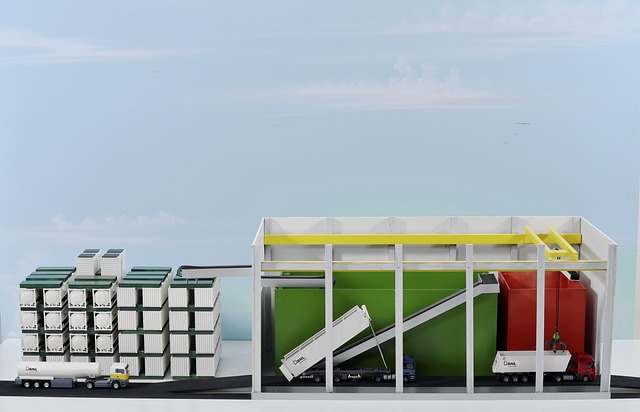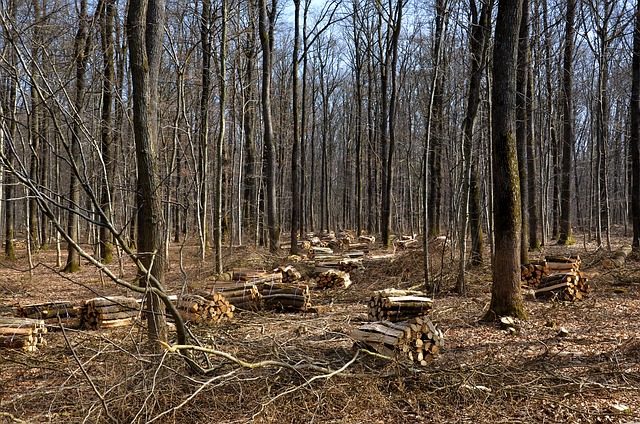Have you ever wondered about the history of biomass energy? In this article, we’ll examine the fascinating historical background of biomass energy and how humans have used it for centuries. From its various feedstocks to the different methods of obtaining energy from biomass, we will delve into all the details.
If you want to learn more about the different ways biomass energy can be derived, such as through direct burning, conversion into electricity, or processing into biofuel, this article is for you. We will also discuss the thermal conversion of biomass, its potential for reducing greenhouse gas emissions, and the production of liquid biofuels like ethanol and biodiesel. Additionally, you’ll discover how biochar can sequester carbon and enrich soil, and why algae holds tremendous potential as a source of biomass energy. So, let’s dive in and uncover the fascinating history and potential of biomass energy!

This image is property of pixabay.com.
Biomass Energy: A Historical Perspective
Biomass energy, derived from living things, has been a vital source of power for humans for centuries. Whether it be burning wood for warmth or harnessing the energy of plants and waste, biomass has played a crucial role in providing energy to communities worldwide. In this article, we will explore the definition of biomass energy, the various types of biomass feedstocks, and the importance of this renewable energy source.
Definition of Biomass Energy
Biomass energy refers to the energy derived from organic matter. This organic matter can include plants, wood, agricultural waste, and even landfill gas. Unlike fossil fuels, biomass energy is renewable because it originates from living or recently living organisms. Biomass is the only renewable energy source that can be converted into both solid and liquid fuels, making it a versatile option for energy production.
Importance of Biomass Energy
Biomass energy is of paramount importance due to its renewable nature and its potential to reduce greenhouse gas emissions. By utilizing organic waste materials, biomass energy helps to reduce the amount of waste sent to landfills, lowering the methane emissions produced by the decomposition of organic matter. Additionally, biomass energy provides an alternative to fossil fuels, which contribute to climate change and air pollution.
Types of Biomass Feedstocks
Plants as Biomass Feedstocks
Plants, including dedicated energy crops, agricultural residues, and forestry residues, are one of the primary sources of biomass feedstocks. These plants can be grown specifically for energy production, such as switchgrass and miscanthus, or can be waste products from agricultural and forestry activities. By harnessing the energy stored in plants, we can generate electricity, heat buildings, and even produce biofuels.
Wood as Biomass Feedstocks
Wood has been used as a biomass feedstock for centuries and continues to be a significant source of biomass energy today. By burning wood, we can produce heat for buildings or generate steam to drive turbines for electricity generation. Biomass-derived wood pellets have also gained popularity as a renewable fuel source for residential and industrial heating systems.
Waste as Biomass Feedstocks
Waste materials, such as agricultural residues, food waste, and municipal solid waste, can also be valuable biomass feedstocks. Instead of allowing these waste materials to decompose and release methane, they can be converted into biomass energy. Anaerobic digestion of organic waste produces biogas, which can be used to generate electricity or heat. Moreover, waste-to-energy facilities burn municipal solid waste to produce electricity while reducing the volume of waste sent to landfills.

This image is property of pixabay.com.
Renewability of Biomass Energy
Renewable Biomass Energy
Renewable biomass energy comes from organic materials that are constantly replenished through natural processes. The growth and regeneration of plants and trees ensure a continuous supply of biomass feedstocks. Moreover, renewable biomass energy has the potential to reduce greenhouse gas emissions by replacing fossil fuels, making it a key component of energy transition strategies.
Nonrenewable Biomass Energy
Not all biomass energy sources are renewable. Biomass feedstocks, such as peat and fossil fuels like coal and oil, take millions of years to form and are considered nonrenewable. While they can still be used as biomass energy sources, their extraction and combustion contribute to climate change and should be minimized in favor of truly renewable biomass feedstocks.
Methods of Obtaining Biomass Energy
Direct Burning of Biomass
The most straightforward method of obtaining biomass energy is through direct burning. This involves combusting biomass feedstocks, such as wood or agricultural waste, to release heat or create steam. The heat can then be utilized for various purposes, including heating buildings or generating electricity through steam turbines.
Conversion into Electricity
In addition to direct burning, biomass energy can be efficiently converted into electricity. Biomass power plants utilize advanced technologies to burn biomass feedstocks at high temperatures, generating steam that drives turbines connected to generators. This process allows for the production of electricity on a large scale, providing a renewable alternative to fossil fuel power plants.
Processing into Biofuel
Another common method of obtaining biomass energy is through the processing of biomass feedstocks into biofuels. Biofuels are liquid or gaseous fuels derived from biomass that can be used as a direct substitute for fossil fuels in vehicles or heating systems. The production of biofuels, such as ethanol and biodiesel, involves the fermentation or transesterification of biomass feedstocks, respectively.

This image is property of pixabay.com.
Thermal Conversion Techniques
Thermal conversion techniques involve the application of heat to biomass feedstocks to transform them into more valuable energy products.
Burning Biomass
Burning biomass is the most basic form of thermal conversion, involving the combustion of biomass feedstocks to produce heat or steam. This method has been used for centuries and continues to be a common practice in areas where biomass is readily available. However, direct burning can release particulate matter and pollutants into the atmosphere, contributing to air pollution.
Co-firing with Fossil Fuels
Co-firing biomass with fossil fuels is an effective strategy to reduce greenhouse gas emissions and transition towards cleaner energy sources. By mixing biomass feedstocks with coal or natural gas, power plants can partially substitute fossil fuels, reducing their carbon footprint. Co-firing also provides economic benefits by utilizing existing fossil fuel infrastructure while promoting the use of renewable energy.
Pyrolysis
Pyrolysis is a thermal conversion technique that involves heating biomass feedstocks in the absence of oxygen. This process breaks down the organic matter into three main products: pyrolysis oil, syngas, and biochar. Pyrolysis oil can be further refined into biofuels, syngas can be used for electricity generation, and biochar can be utilized as a soil amendment to enhance carbon sequestration and soil fertility.
Gasification
Gasification is a thermochemical process that converts biomass feedstocks into a mixture of gases known as syngas. The process involves heating biomass with controlled amounts of oxygen and steam to produce syngas, which can be used as a fuel or feedstock for the production of chemicals. Gasification also produces a byproduct called slag, which can be used in construction materials.
Anaerobic Decomposition and Methane Production
Methane Production in Landfills
Anaerobic decomposition of organic waste in landfills produces a significant amount of methane, a potent greenhouse gas. However, this methane can be captured and utilized as a valuable energy source. Landfill gas recovery systems collect methane emissions and convert them into electricity or heat, reducing greenhouse gas emissions while providing renewable energy.
Utilization of Methane as an Energy Source
Methane produced from anaerobic digestion or landfill gas recovery can be used as an energy source in various applications. It can fuel vehicles, power turbines for electricity generation, or be used for heating. Utilizing methane as an energy source not only reduces greenhouse gas emissions but also helps to mitigate odor issues associated with waste management.
Liquid Biofuels from Biomass
Ethanol Production from Biomass
Ethanol, a liquid biofuel, can be produced from biomass feedstocks through a process called fermentation. Biomass, such as corn or sugarcane, is broken down into sugars, which are then fermented by adding yeast. The fermentation process converts the sugars into ethanol. Ethanol is commonly used as a fuel additive to gasoline or as a standalone fuel for vehicles with flex-fuel capabilities.
Biodiesel Production from Biomass
Biodiesel, another liquid biofuel, can be produced from biomass feedstocks through a process called transesterification. In this process, biomass oil, such as vegetable oil or animal fat, is reacted with an alcohol, typically methanol, to produce biodiesel and glycerin. Biodiesel can be used in diesel engines without any modifications and is considered a cleaner-burning alternative to petroleum diesel.
Utilization of Biochar
Production of Biochar through Pyrolysis
Biochar is the solid residue produced during the pyrolysis process, which involves heating biomass feedstocks in the absence of oxygen. Biochar is a carbon-rich material that can be used to sequester carbon and improve soil fertility. When applied to agricultural soils, biochar enhances water retention, nutrient availability, and microbial activity, ultimately leading to higher crop yields.
Carbon Sequestration and Soil Enrichment
Biochar plays a vital role in carbon sequestration due to its ability to lock away carbon dioxide for hundreds or even thousands of years. By burying carbon in the form of biochar in the soil, we can mitigate climate change by removing carbon dioxide from the atmosphere. Additionally, biochar improves soil health by enhancing its structure, nutrient retention, and microbial activity, making it an essential tool in sustainable agriculture.
Recycling Black Liquor from Paper Mills
Black Liquor as a Biomass Energy Source
Black liquor, a byproduct of the paper-making process, can be recycled as a biomass energy source. It is a highly alkaline and viscous liquid that contains organic material and inorganic chemicals. By concentrating and combusting black liquor in recovery boilers, paper mills can generate high-pressure steam, which can then be used to drive turbines for electricity generation. This process not only reduces the environmental impact of paper production but also helps to meet the energy demands of the mills.
Conclusion
Biomass energy has a rich history and continues to be an indispensable part of our energy landscape. From the burning of wood for heat to the production of liquid biofuels, biomass offers a renewable and sustainable alternative to fossil fuels. As we transition towards a greener future, it is crucial to continue researching and innovating in biomass energy technology. By harnessing the power of organic matter, we can mitigate climate change, reduce reliance on fossil fuels, and build a more sustainable and resilient energy system for future generations.
Learn more about major players involved in Biomass Energy
More information at National Renewable Energy Laboratory (NREL)


